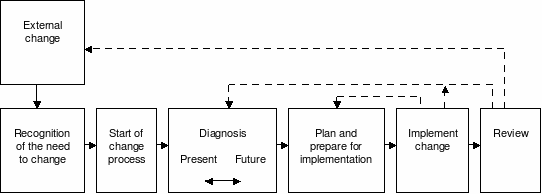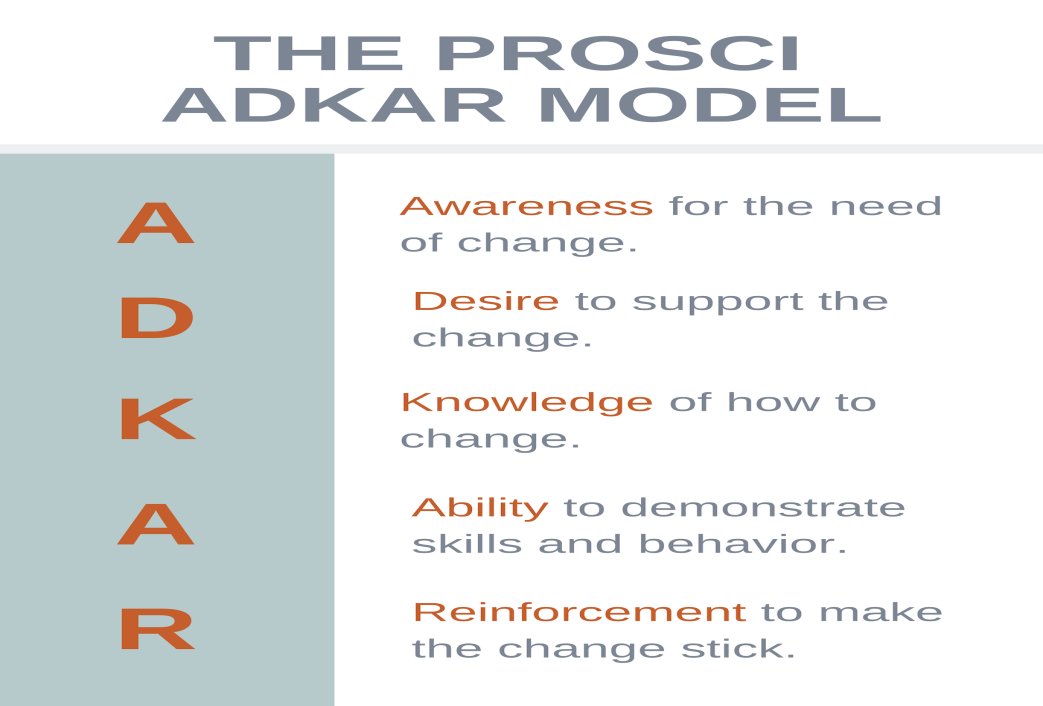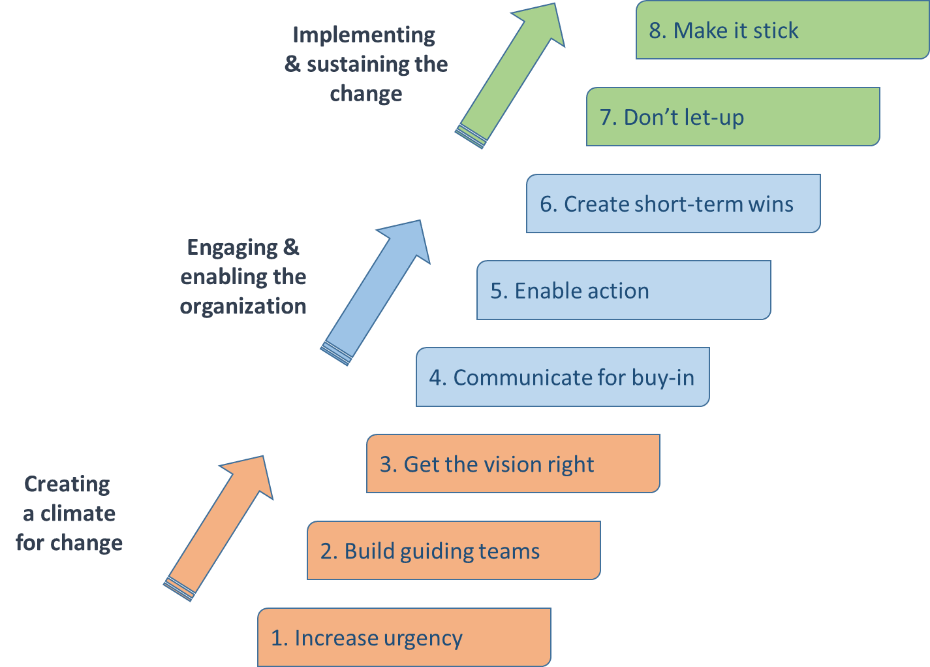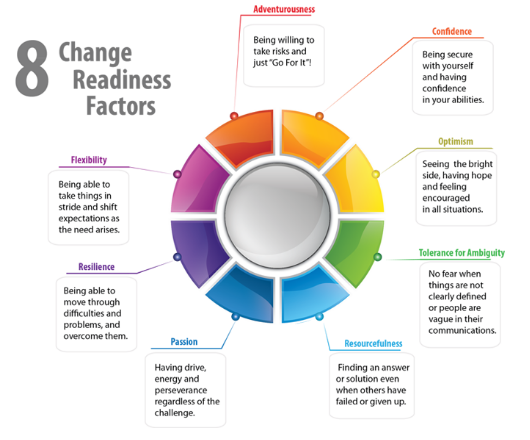Action Plan Assignment: Implementation Of Hayes Interventions For Improvement
Question
Task: Create the action plan assignment that develops corrective actions, guides change management plans, and measures progress of Dutch Business School using both academic and practitioner sourced material.
Answer
Executive summary
The action plan assignment provided a brief analysis of the three different steps associated with an action plan. The steps of correcting certain relevant actions, guidance provided to managing changes and lastly, measurement and evaluation of different categories of progress activities helped in developing the significant aspects of the change management system. Oakland’s frame work and ADKAR model provided the impetus in assessing changes around us. It is assumed that the Dutch Business School would gain profits from the integration of practices.
Introduction
The three steps associated with designing the action plan will be demonstrated within the action plan assignment. The three steps of developing the corrective actions or interventions by utilizing Hayes intervention will be utilized in a systematic manner to demonstrate the knowledge and ability adhering to the components of ADKAR model. The second step associated with guide change management and the third step of measuring the progress will be discussed in details and their various aspects evaluated by sticking to the different categories of systems and policies. Action plan will be framed within the context of action plan assignment by integrating the relevant steps and assessing them to establish the numerous profits within the social sphere.
Step 1: Development of corrective actions (interventions)
Hayes intervention
Heather Hayes, one of the popular or renowned interventionist working from the year 1986 stated that despite of having different other models of intervening the issues or areas of problems, like Johnson, Arise, and Family System model, one should focus on direct assessment through considering the internal and external situations. Hayes mentioned that involving the primary people in the intervention process would be beneficial, as the primary people, having higher interest in the process of changes, could take better decisions during the initial time (Hayes, 2018). On the other hand, it is also stated in the context of action plan assignment that according to the statement of Hayes (2018), there is no specific framework of Hayes intervention; therefore, the organizations need to focus on the involvement of primary stakeholders and assessment of the gapped areas or areas of improvement.

Figure 1: Hayes intervention
(Source: Bejinariu, Jitarel, Sarca & Mocan, 2017)
By considering the previous assessments in order to prepare this action plan assignment, it can be stated that the Dutch Business School is going from a phase of transition as mentioned in the ADKAR model, which would create several changes in the overall process, and makes it sustainable for the future growth and development. However, as influenced from the viewpoint of Galli (2018), there are different issues associated with the process of transition, all of which are required to be addressed during the change management process. According to the ADKAR model, during the transition phase, one requires successful movement through the state of transition, which often remains dependent on the process of change and ability, skills, and professional behaviours (Hersel, Helmuth, Zorn, Shropshire & Ridge, 2019). In the change process of the business school, if the required factors might not be associated with the operations, then it could create a larger gap in the change management process.
Apart from the above study developed in the action plan assignment, absence of proficient ability, skills, and professional behaviours might also create knowledge gap and understanding gap, due to which the existing employees working in the educational institutes might become resistance against the changes (Bejinariu et al. 2017). For example, logging all the documents of the university requires sufficient technical knowledge, which might be a bigger issue in the process of change. On the other hand, the overall qualitative and quantitative measurements of the school reflected that almost all of the employees working in the Management study department thought that they required to do extra works and do not get sufficient opportunities of publishing their assignments. Additional to this, moving of some brilliant scholars to other avenues might create a challenge for the Dutch Business School to maintain their reputation (Bejinariu et al. 2017). Along with this, absence of proper research methods, absence of proper utilization of financial methods, and failure in cost-effective approaches also reflect that applying change management ADKAR model is necessary in this case of action plan assignment.
Demonstration of knowledge and ability (Components of ADKAR model)
Every change process has several steps, along with range of corrective actions, all of which are required to be performed like a continuous process, rather than making some discontinuous events (Tang, 2019). In the previous assessments, diagnosis of the required changes in the Dutch Business School has already been done, one of which is based on the incorporation and assembly of three different academic departments, and the other one is to maintain the financial resources for effectively manage the change process. However, since there are ranges of issues associated with these processes, the accumulation of the three new departments might be a pathway for overcoming the negative aspects.
As per the principles of ADKAR model, ‘K’ means effective knowledge for understanding the process of change and ‘A’ means ability of implementing required skills and behaviors (Wong, Lacombe, Keller, Joyce & O'Malley, 2019). In order to address the issues mentioned in the above section of action plan assignment, the educational institute would focus on accumulation of three departments in a combined one for distributing the positive factors among all, and eliminate the negative points properly. The primary role would be played by the dean while combining the three departments, as he would decide the necessary equipment, necessary policies and guidelines, and required resources for this accumulation (Wong et al. 2019).

Figure 2: ADKAR model
(Source: Wong et al. 2019)
Apart from this, it is also clear from the readings developed in the action plan assignment that the dean would also focus on the process of financial management and better implication of granted funds in the R&D progress. Through assessing the capacity, it can be stated that the business school has sufficient capacity of addressing the changes properly, such as efficient strategies, professional leaders, effective organizational culture, proper structure, positive working environment, and so on. Now, the following section provided within this action plan assignment would highlight on a proper guidance towards the execution of change management plan by using Oakland’s eight step framework.
Step 2: Guide change management
After intervening the issues and identifying the required changes, it can be stated in the action plan assignment that guiding the overall change management process can be followed by the school authority. In order to guide the change process, Oakland’s eight-step framework can be used (Van der Voet & Vermeeren, 2017). This can be considered as a modified version of Kotter’s eight-step framework. As per the first stage, the dean of the school requires creating a specific environment for the change process. During this step, the dean can focus on increasing urgency towards the accumulation of three departments, along with better management of financial resources, through building proper and effective teams as well as getting the vision rights. Dean can focus on exploring the change visions in front of the new guiding team, along with explaining the requirements behind the changes. According to the statement of Cameron and Green (2019), it is clear in the action plan assignment that such transparent and descriptive communication would be helpful for the employees in understanding the exact requirements of changes within the organizational operations.
The second phase of this framework outlined in this section of action plan assignment is engaging as well as enabling the organization in the change management process (Van der Voet & Vermeeren, 2017). During the initiation of second phase, the dean of the business school would focus on communicating for the buy-in process. This would be effective for involving all the employees in the process of decision making (Goyal & Patwardhan, 2018). The second step of this second phase mentioned within this action plan assignment is to enable the required actions. At this step, the dean of the Business School would focus on distributing different roles and responsibilities to the involved team members, for making the process progressive towards its goals.

Figure 3: Oakland’s 8-step framework
(Source: Das, 2019)
Although the changes are required for long-term sustainability, making short-term wins is required before creating long-term goals. Doppelt (2017) mentioned that the achievement of short-term wins would motivate employees in getting success in the future goals also. The last phase of this framework outlined in this segment of action plan assignment is implementation and sustaining the required changes. At this step, the dean of the business school would focus on making the changes static in the institution, along with maintaining or improving the overall outcomes of the change process. At this step, the factors associated with change readiness, like adventurousness, confidence, flexibility, resilience, passion, resourcefulness, optimism, and tolerance, are required to be included for continuous initiation and responses to the scheduled changes. Goyal & Patwardhan (2018) stated that change readiness and its associated factors are effective in creating advantages, minimising risks, and sustaining performance level. However, Dana, Mukaj and Vishkurti (2016) mentioned that incorporation change management would not be enough for maintaining the sustainability, measuring the progress level is also essential, which is discussed in the following section of action plan assignment.

Figure 4: Factors associated with Change Readiness
(Source: Goyal & Patwardhan, 2018)
Step 3: Measuring progress
As being clear from the articles used to prepare this action plan assignment, Prosci’s ADKAR model proves to be a simplistic model that adopts and utilizes the activities being helpful to integrate the numerous changes within the organizational sphere. According to Das (2019), utilising ADKAR model helps in providing the managers the much-needed support in adopting and consolidating the desired changes. Within Dutch Business School, specific results that the change is wanting to adopt helps in enhancing progress of the individual as well as in other relevant aspects. The proposes action plan assignment also signifies the study of Hayes (2018) that the outcomes relating to the specified practices of change management provides the support to the individuals to help in managing the operations being designed by the management. Dutch Business School can measure the progress of its employees as well as their students by utilizing the component ‘R’ of the ADKAR model.
R of the model means ‘reinforcement’ strategy from the perspective of change management. Evidence suggested that it is a natural tendency of human that they try readily moving to the next changes, after completing a single phase. Human often overlook the significance of looking back to the completed phases, and focusing on the process of ‘reinforcement’. Doppelt (2017) mentioned that making change is obviously difficult, but sustaining that changes are more difficult in nature, due to which reinforcement is essential for obtaining successful changes. In case of Dutch Business School change management plan examined in the action plan assignment, the reinforcement factors would be celebrations of changes, accountability mechanisms, visible measurement of performance standards, feedbacks, corrective actions, and rewards as well as recognition (How to Measure Change Management, 2019).
The management can devise plans by utilizing three prospective factors designed by PROSCI such as the rate of adoption of the transformation activities by the different individuals, another question arises regarding the number of individuals who are utilizing change in their daily life activities and lastly states the proficiency by which the change is used. The progress that is achievable now becomes very much profitable for establishing the bright prospect of Dutch Business School located in Dhaka (Das, 2019).
There are different potential challenges and resisting forces, for which the reinforcement factors are required. For example, in many cases, it is often seen that rewards become meaningless or less associated with the achievement due to the absence of proper orientation or alignment. On the other hand, the words of Wong et al. (2019) explored in the action plan assignment mentioned that absence of reinforcement is observed, especially during the accomplishment of the changes. The Dutch Business School would focus on creating a publicly visible scoreboard metrics for showing positive compliance to the new procedures. Along with this, the dean of the Business School would focus on providing feedbacks to the employees directly as per their performance standards, based on which the recognition and reward system can be designed. It is necessary to represent the visibility of the changed processes for showing their performance to the senior and main sponsors. Along with this, the findings obtained in the action plan assignment also illustrates that the dean of the Business School could focus on incorporation of compensation as well as appraisal system, which are necessary for supporting the changes required in the improvement of school operations (Goyal & Patwardhan, 2018).
Recommendation
Based on the above discussion of the corrective actions, guidelines, and measurement progresses provided within this action plan assignment, the dean can focus on the following points of recommendation, such as-
- The institute can focus on hiring some external employees for managing the changed processes, like technological modifications.
- A performance appraisal system, along with the half yearly reward and recognition method would be beneficial for evaluating the employees’ performance.
- Strategic financial planning through using different financial management tools and techniques could be applied for effective structural distribution of the granted funds in different sectors.
Conclusion
The three stages of action plan were devised within the social and organizational sphere of Dutch Business School helping in the establishment of quality teaching practices to be developed within the business school sphere. It is to be concluded from the above discussion done within this action plan assignment that Utilising Hayes Interventions provided the support in removing the mistakes and flaws of designing the tasks that have been corrected. Guiding of change management helps in proving the benefits and establishing efficacy within the organizational sphere. ADKAR model being utilized in the case scenario of action plan assignment has its merits in demonstration of knowledge and ability that proves to be beneficial in assessing the activities of Dutch Business School and brings about progress of their staffs on an individual and cumulative way.
References
Bejinariu, A. C., Jitarel, A., Sarca, I., &Mocan, A. (2017).Organizational Change Management–Concepts Definitions and Approaches Inventory. Action plan assignment In Management Challenges in a Network Economy: Proceedings of the MakeLearn and TIIM International Conference 2017 (pp. 321-330). ToKnowPress.
Cameron, E., & Green, M. (2019). Making sense of change management: A complete guide to the models, tools and techniques of organizational change.Kogan Page Publishers.
Dana, B. G., Mukaj, L., &Vishkurti, M. (2016).Creating a model culture of management change. Annals of the University of Oradea, Economic Science Series, 25(1), 871-880.
Das, V. (2019).Comparative Study of Kotter’s and Hiatt’s (ADKAR) Change Models. Journal of Leadership and Management, 1(15).
Doppelt, B. (2017). Leading change toward sustainability: A change-management guide for business, government and civil society. Routledge.
Galli, B. J. (2018). Change management models: A comparative analysis and concerns. IEEE Engineering Management Review, 46(3), 124-132.
Goyal, C., &Patwardhan, M. (2018). Role of change management using ADKAR model: a study of the gender perspective in a leading bank organisation of India. International Journal of Human Resources Development and Management, 18(3-4), 297-316.
Hayes, J. (2018). The theory and practice of change management. Palgrave.
Hersel, M. C., Helmuth, C. A., Zorn, M. L., Shropshire, C., & Ridge, J. W. (2019). The corrective actions organisation s pursue following misconduct: A review and research agenda. Action plan assignment Academy of Management Annals, 13(2), 547-585.
How to Measure Change Management.(2019). Stacey Barr | Performance Measure & KPI Specialist. Retrieved 3 February 2020, from https://www.staceybarr.com/measure-up/how-to-measure-change-management/
Tang, K. N. (2019). Change management. In Leadership and Change Management (pp. 47-55). Springer, Singapore.
Van der Voet, J., &Vermeeren, B. (2017). Change management in hard times: Can change management mitigate the negative relationship between cutbacks and the organizational commitment and work engagement of public sector employees? Action plan assignment The American Review of Public Administration, 47(2), 230-252.
Wong, Q., Lacombe, M., Keller, R., Joyce, T., & O'Malley, K. (2019).Leading change with ADKAR. Nursing management, 50(4), 28-35.












